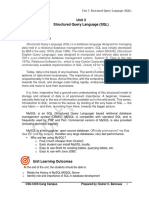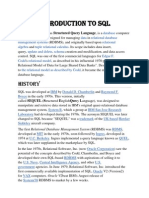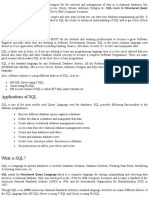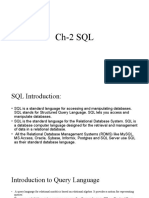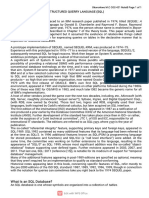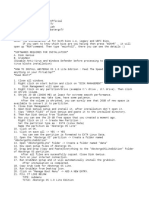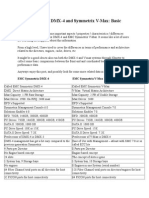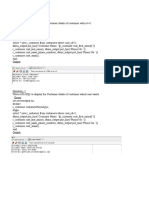0% found this document useful (0 votes)
14 views4 pagesExpo SQL
SQL, or Structured Query Language, is a standard language used for database creation and manipulation, allowing users to store, update, delete, search, and retrieve information. It is widely utilized across various sectors for data management, data science, and application development due to its ease of learning and powerful capabilities. SQL has a rich history dating back to IBM in 1969 and includes various components such as DDL, DML, TCL, DCL, and DQL for different database operations.
Uploaded by
IsaaKCopyright
© © All Rights Reserved
We take content rights seriously. If you suspect this is your content, claim it here.
Available Formats
Download as DOCX, PDF, TXT or read online on Scribd
0% found this document useful (0 votes)
14 views4 pagesExpo SQL
SQL, or Structured Query Language, is a standard language used for database creation and manipulation, allowing users to store, update, delete, search, and retrieve information. It is widely utilized across various sectors for data management, data science, and application development due to its ease of learning and powerful capabilities. SQL has a rich history dating back to IBM in 1969 and includes various components such as DDL, DML, TCL, DCL, and DQL for different database operations.
Uploaded by
IsaaKCopyright
© © All Rights Reserved
We take content rights seriously. If you suspect this is your content, claim it here.
Available Formats
Download as DOCX, PDF, TXT or read online on Scribd
/ 4















